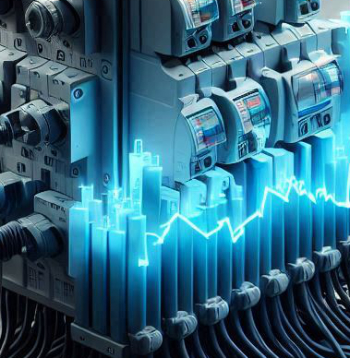The world's fastest lifts
Contents |
Introduction
Some of the world’s fastest lifts are capable of achieving speeds higher than 64 km, or 40 miles, per hour. These lifts are installed in some of the globe’s tallest buildings, with seven of the top eight fastest lifts in the world being in Asia.
It is believed that by 2020, 40% of the world’s lifts will be installed in Asia. The world’s fastest lifts are used to transport people and goods and use electric power to travel the many storeys.
Jin Mao Tower – Shanghai
The lift in this tower is capable of reaching speeds of 32km per hour, or 20 miles per hour. The tower is 421 m tall and takes 46 seconds to travel from the ground to the roof. Mitsubishi was the manufacturer of the lift. In total, there are 130 operating lifts in the tower, including two express ones in the basement.
John Hancock Center – Chicago
With a top speed of 33 kph, the equivalent to 20.5 mph, the Otis lift at the John Hancock Center is capable of travelling from ground to roof in 38 seconds. The Center is 457 m tall and, if visitors prefer not to take the lift, they can climb the stairway from the lobby to the Observatory by climbing the 1,632 steps.
Sunshine 60 Building - Tokyo
Another lift manufactured by Mitsubishi Electric Corporation. The lift at the Sunshine 60 Building, in Japan, is 240 m tall and achieves a maximum speed of 35kph (or 22 mph). It takes 24 seconds for the lift to travel from the ground to the roof. From the top of the building, visitors can see as far as 62 miles if the weather is clear.
Yokohama Landmark Tower - Yokohama
This Japanese tower measures 296 m and possesses a total of 79 lifts, including a high-speed on that is capable of reaching a maximum speed of 45 kph (28 mph). It takes this lift 24 seconds to travel to the top of the building. Mitsubishi is its supplying company.
Taipei 101 - Taiwan
The building is 508 m tall and each of its two Toshiba high-speed lifts costs approximately £1.5bn. Capable of reaching speeds of 61 km per hour, or 37.7 miles per hour, these lifts travel the many storeys from the bottom to the top in 30 seconds.
Shanghai Tower – Shanghai
The Shanghai Tower Unit OB-3 is the world’s second tallest building and its lift, NexWay, travels at speeds of 73.8km per hour, or 45.9 miles per hour. Installed on July 7, 2016, this lift was produced by the Japanese Mitsubishi Electric Corporation and travels 121 storeys in the 632 m tower in 53 seconds. This is the equivalent of 20.5 m per second.
Lotte World Tower - Seoul
The record for the world’s fastest lift is held by the Lotte World Tower in Seoul, South Korea. The tower itself measures 555 m (1,820 ft) in height. The double-decker lift, called Sky Shuttle, is 496 m (1,627 ft) tall and was created by the Lotte World Tower and Otis Elevator Company.
This lift is capable of travelling from the basement to the 121st floor (the observation deck) in just one minute; the equivalent of 10 m per second.
Find out more
Related articles by Designing Buildings Wiki
- 9 of the world’s most impressive structures.
- A brief history of lifts over the years.
- Escalator.
- Lifting device.
- Lifts.
- Lifts and Escalators: A Quality Perspective.
- Lifts and Their Special Operating Modes.
- Lifts for office buildings.
- Tallest buildings in the world.
- The science of lifts.
--Nathan Massey 14:26, 11 Jul 2017 (BST)
Featured articles and news
How can digital twins boost profitability within construction?
A brief description of a smart construction dashboard, collecting as-built data, as a s site changes forming an accurate digital twin.
Unlocking surplus public defence land and more to speed up the delivery of housing.
The Planning and Infrastructure bill oulined
With reactions from IHBC and others on its potential impacts.
Farnborough College Unveils its Half-house for Sustainable Construction Training.
Spring Statement 2025 with reactions from industry
Confirming previously announced funding, and welfare changes amid adjusted growth forecast.
Scottish Government responds to Grenfell report
As fund for unsafe cladding assessments is launched.
CLC and BSR process map for HRB approvals
One of the initial outputs of their weekly BSR meetings.
Architects Academy at an insulation manufacturing facility
Programme of technical engagement for aspiring designers.
Building Safety Levy technical consultation response
Details of the planned levy now due in 2026.
Great British Energy install solar on school and NHS sites
200 schools and 200 NHS sites to get solar systems, as first project of the newly formed government initiative.
600 million for 60,000 more skilled construction workers
Announced by Treasury ahead of the Spring Statement.
The restoration of the novelist’s birthplace in Eastwood.
Life Critical Fire Safety External Wall System LCFS EWS
Breaking down what is meant by this now often used term.
PAC report on the Remediation of Dangerous Cladding
Recommendations on workforce, transparency, support, insurance, funding, fraud and mismanagement.
New towns, expanded settlements and housing delivery
Modular inquiry asks if new towns and expanded settlements are an effective means of delivering housing.
Building Engineering Business Survey Q1 2025
Survey shows growth remains flat as skill shortages and volatile pricing persist.

























Comments
The last entry allegedly describes the world's fastest elevator while neglecting to give its speed in either km/h or mph, as it does with all the other elevators mentioned, and then gives its speed in m/s...and it works out to be near the BOTTOM of the six mentioned! It's 10 m/s, about 22 mph, less than HALF the speed of the one mentioned before it.